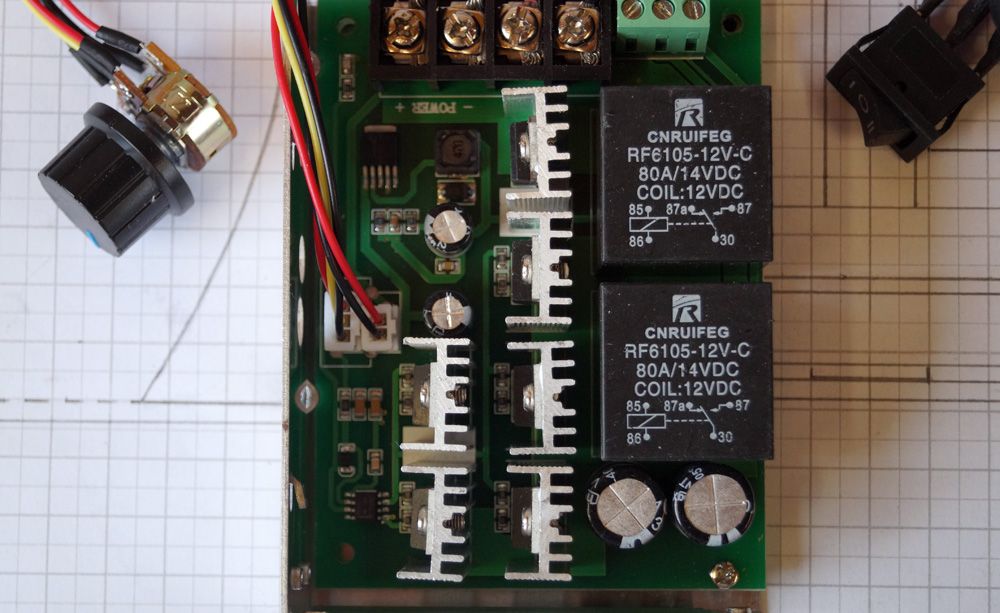Wild guesses but I suggest:
- The lack of coils imply it's a PWM controller. (This is good)
- The two relays provide forward / reverse switching by swapping the polarity of the output terminals. Don't know if the electronics protect against the operator switching from full speed ahead to full speed reverse. Does the switch have a central neutral position?
- There's what looks like a preset potentiometer under the upside down word 'POWER'. I think this is most likely to set the current overload trip value. I wouldn't mess with it.
If the controller were mine I would connect a car headlamp across the output as a test load and, with the pot OFF/minimum, apply power to the input. Then vary the pot to see if the lamp brightness varies. If all is well substitute motors and confirm they work too.
Fitted to the loco the driver wouldn't have much clue from the controller if he was overdoing it or not. So I'd fit an ammeter to the input and display the current in the cab. This one might be suitable, particularly as it also displays Watts.
Watts are good because – within reason – the motors don't care about particular volts and amps values. What matters is how hot they get, which is indicated by the watts consumed. Say you have 12V, 15A motors that's 180W, and as there are 4 of them, a total of 720W. Provided the driver keeps below 720W and doesn't overheat the motors all should be well. (This is how people get away with 24V on a 12V motor. ) The actual value depends on how hot the motors get in practice. As this depends on the cooling arrangements and track/load profile, I'd recommend some test runs to see how warm the motors get. If they get hot, reduce the drivers watt limit.
Overheating may not happen at all in practice – infrequent lightly loaded trains – and it could be you flatten the batteries before the motors get too hot however hard you drive them.
To avoid fires and prevent overloading the controller, fit a 60A automotive fuse to the input.
If the controller 'just works' there's no need to fret about the volt-amp relationships. Fingers crossed – it might be easy.
Dave
 Michael Gilligan.
Michael Gilligan.


 . Any controllers which do not state a time allowed at maximum current may well only withstand a very short term spike, without the circuitry letting out the magic smoke. That is likely the difference between cheap and better quality, but more expensive, controllers.
. Any controllers which do not state a time allowed at maximum current may well only withstand a very short term spike, without the circuitry letting out the magic smoke. That is likely the difference between cheap and better quality, but more expensive, controllers.

